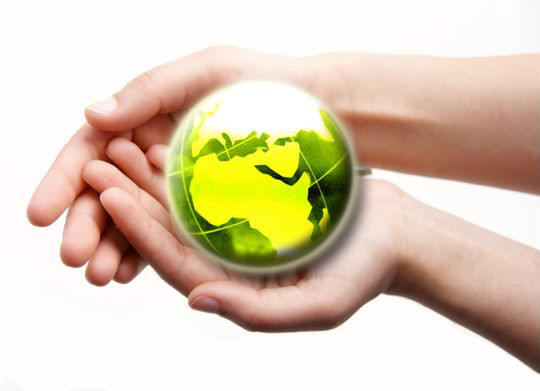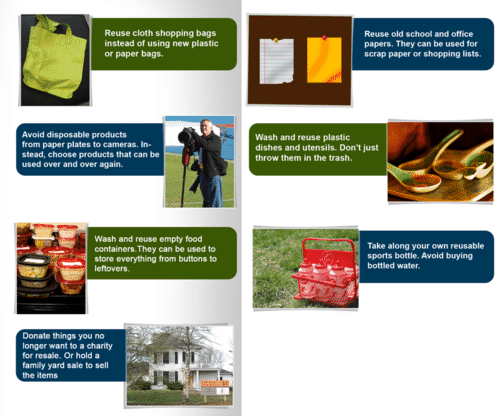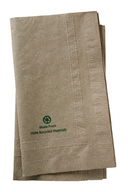21.12: Natural Resource Conservation
- Page ID
- 6138
\( \newcommand{\vecs}[1]{\overset { \scriptstyle \rightharpoonup} {\mathbf{#1}} } \)
\( \newcommand{\vecd}[1]{\overset{-\!-\!\rightharpoonup}{\vphantom{a}\smash {#1}}} \)
\( \newcommand{\dsum}{\displaystyle\sum\limits} \)
\( \newcommand{\dint}{\displaystyle\int\limits} \)
\( \newcommand{\dlim}{\displaystyle\lim\limits} \)
\( \newcommand{\id}{\mathrm{id}}\) \( \newcommand{\Span}{\mathrm{span}}\)
( \newcommand{\kernel}{\mathrm{null}\,}\) \( \newcommand{\range}{\mathrm{range}\,}\)
\( \newcommand{\RealPart}{\mathrm{Re}}\) \( \newcommand{\ImaginaryPart}{\mathrm{Im}}\)
\( \newcommand{\Argument}{\mathrm{Arg}}\) \( \newcommand{\norm}[1]{\| #1 \|}\)
\( \newcommand{\inner}[2]{\langle #1, #2 \rangle}\)
\( \newcommand{\Span}{\mathrm{span}}\)
\( \newcommand{\id}{\mathrm{id}}\)
\( \newcommand{\Span}{\mathrm{span}}\)
\( \newcommand{\kernel}{\mathrm{null}\,}\)
\( \newcommand{\range}{\mathrm{range}\,}\)
\( \newcommand{\RealPart}{\mathrm{Re}}\)
\( \newcommand{\ImaginaryPart}{\mathrm{Im}}\)
\( \newcommand{\Argument}{\mathrm{Arg}}\)
\( \newcommand{\norm}[1]{\| #1 \|}\)
\( \newcommand{\inner}[2]{\langle #1, #2 \rangle}\)
\( \newcommand{\Span}{\mathrm{span}}\) \( \newcommand{\AA}{\unicode[.8,0]{x212B}}\)
\( \newcommand{\vectorA}[1]{\vec{#1}} % arrow\)
\( \newcommand{\vectorAt}[1]{\vec{\text{#1}}} % arrow\)
\( \newcommand{\vectorB}[1]{\overset { \scriptstyle \rightharpoonup} {\mathbf{#1}} } \)
\( \newcommand{\vectorC}[1]{\textbf{#1}} \)
\( \newcommand{\vectorD}[1]{\overrightarrow{#1}} \)
\( \newcommand{\vectorDt}[1]{\overrightarrow{\text{#1}}} \)
\( \newcommand{\vectE}[1]{\overset{-\!-\!\rightharpoonup}{\vphantom{a}\smash{\mathbf {#1}}}} \)
\( \newcommand{\vecs}[1]{\overset { \scriptstyle \rightharpoonup} {\mathbf{#1}} } \)
\( \newcommand{\vecd}[1]{\overset{-\!-\!\rightharpoonup}{\vphantom{a}\smash {#1}}} \)
\(\newcommand{\avec}{\mathbf a}\) \(\newcommand{\bvec}{\mathbf b}\) \(\newcommand{\cvec}{\mathbf c}\) \(\newcommand{\dvec}{\mathbf d}\) \(\newcommand{\dtil}{\widetilde{\mathbf d}}\) \(\newcommand{\evec}{\mathbf e}\) \(\newcommand{\fvec}{\mathbf f}\) \(\newcommand{\nvec}{\mathbf n}\) \(\newcommand{\pvec}{\mathbf p}\) \(\newcommand{\qvec}{\mathbf q}\) \(\newcommand{\svec}{\mathbf s}\) \(\newcommand{\tvec}{\mathbf t}\) \(\newcommand{\uvec}{\mathbf u}\) \(\newcommand{\vvec}{\mathbf v}\) \(\newcommand{\wvec}{\mathbf w}\) \(\newcommand{\xvec}{\mathbf x}\) \(\newcommand{\yvec}{\mathbf y}\) \(\newcommand{\zvec}{\mathbf z}\) \(\newcommand{\rvec}{\mathbf r}\) \(\newcommand{\mvec}{\mathbf m}\) \(\newcommand{\zerovec}{\mathbf 0}\) \(\newcommand{\onevec}{\mathbf 1}\) \(\newcommand{\real}{\mathbb R}\) \(\newcommand{\twovec}[2]{\left[\begin{array}{r}#1 \\ #2 \end{array}\right]}\) \(\newcommand{\ctwovec}[2]{\left[\begin{array}{c}#1 \\ #2 \end{array}\right]}\) \(\newcommand{\threevec}[3]{\left[\begin{array}{r}#1 \\ #2 \\ #3 \end{array}\right]}\) \(\newcommand{\cthreevec}[3]{\left[\begin{array}{c}#1 \\ #2 \\ #3 \end{array}\right]}\) \(\newcommand{\fourvec}[4]{\left[\begin{array}{r}#1 \\ #2 \\ #3 \\ #4 \end{array}\right]}\) \(\newcommand{\cfourvec}[4]{\left[\begin{array}{c}#1 \\ #2 \\ #3 \\ #4 \end{array}\right]}\) \(\newcommand{\fivevec}[5]{\left[\begin{array}{r}#1 \\ #2 \\ #3 \\ #4 \\ #5 \\ \end{array}\right]}\) \(\newcommand{\cfivevec}[5]{\left[\begin{array}{c}#1 \\ #2 \\ #3 \\ #4 \\ #5 \\ \end{array}\right]}\) \(\newcommand{\mattwo}[4]{\left[\begin{array}{rr}#1 \amp #2 \\ #3 \amp #4 \\ \end{array}\right]}\) \(\newcommand{\laspan}[1]{\text{Span}\{#1\}}\) \(\newcommand{\bcal}{\cal B}\) \(\newcommand{\ccal}{\cal C}\) \(\newcommand{\scal}{\cal S}\) \(\newcommand{\wcal}{\cal W}\) \(\newcommand{\ecal}{\cal E}\) \(\newcommand{\coords}[2]{\left\{#1\right\}_{#2}}\) \(\newcommand{\gray}[1]{\color{gray}{#1}}\) \(\newcommand{\lgray}[1]{\color{lightgray}{#1}}\) \(\newcommand{\rank}{\operatorname{rank}}\) \(\newcommand{\row}{\text{Row}}\) \(\newcommand{\col}{\text{Col}}\) \(\renewcommand{\row}{\text{Row}}\) \(\newcommand{\nul}{\text{Nul}}\) \(\newcommand{\var}{\text{Var}}\) \(\newcommand{\corr}{\text{corr}}\) \(\newcommand{\len}[1]{\left|#1\right|}\) \(\newcommand{\bbar}{\overline{\bvec}}\) \(\newcommand{\bhat}{\widehat{\bvec}}\) \(\newcommand{\bperp}{\bvec^\perp}\) \(\newcommand{\xhat}{\widehat{\xvec}}\) \(\newcommand{\vhat}{\widehat{\vvec}}\) \(\newcommand{\uhat}{\widehat{\uvec}}\) \(\newcommand{\what}{\widehat{\wvec}}\) \(\newcommand{\Sighat}{\widehat{\Sigma}}\) \(\newcommand{\lt}{<}\) \(\newcommand{\gt}{>}\) \(\newcommand{\amp}{&}\) \(\definecolor{fillinmathshade}{gray}{0.9}\)Can you make a difference?
Yes! You can conserve natural resources every day with every decision you make. Should you recycle that can? Yes! Should you buy a bottle of water or drink from the water fountain? Fountain! Should you walk or ride your bike to school or ask for a ride? Walk or ride your bike—it's good exercise too!
Conserving Natural Resources
How can we protect Earth’s natural resources? One answer is conservation. This means saving resources. We need to save resources so some will be left for the future. We also need to protect resources from pollution and overuse.
When we conserve resources, we also cut down on the trash we produce. Americans throw out 340 million tons of trash each year. We throw out 2.5 million plastic bottles alone—every hour! Most of what we throw out ends up in landfills (Figure below). In a landfill, all those plastic bottles take hundreds of years to break down. What are the problems caused by producing so much trash? Natural resources must be used to produce the materials. Land must be given over to dump the materials. If the materials are toxic, they may cause pollution.
A bulldozer crushes a mountain of trash.
The Three “R”s
You probably already know about the three “R”s. They stand for reduce, reuse, and recycle. The third “R”—recycle—has caught on in a big way. That’s because it’s easy. There are thousands of places to drop off items such as aluminum cans for recycling. Many cities allow you to just put your recycling in a special can and put it at the curb. However, the first two "R"s are even more important.
We haven’t done as well with the first two “R”s—reducing and reusing. But they aren’t always as easy as recycling. Recycling is better than making things from brand new materials. But it still takes some resources to turn recycled items into new ones. It takes no resources at all to reuse items or not buy them in the first place.
Reduce
Reducing resource use means just what it says—using fewer resources. There are lots of ways to reduce our use of resources.
- Buy durable goods. Choose items that are well made so they will last longer. You’ll buy fewer items in the long run, so you’ll save money as well as resources. That's a win-win!
- Repair rather than replace. Fix your bike rather than buying a new one. Sew on a button instead of buying a new shirt. You’ll use fewer resources and save money.
- Buy only what you need. Don’t buy a gallon of milk if you can drink only half of it before it spoils. Instead, buy a half gallon and drink all of it. You won’t be wasting resources (or money!).
- Buy local. For example, buy local produce at a farmer’s market, like the one pictured below (Figure below). A lot of resources are saved by not shipping goods long distances. Products bought at farmer's markets use less packaging, too!
Buying locally grown produce at a farmer's market saves resources.
About a third of what we throw out is packaging. Try to buy items with the least amount of packaging. For example, buy bulk items instead of those that are individually wrapped. Also, try to select items with packaging that can be reused or recycled. This is called precycling. Pop cans and plastic water bottles, for example, are fairly easy to recycle. Some types of packaging are harder to recycle (Figure below). If it can’t be reused or recycled, it’s a waste of resources.
- Many plastics: The recycling symbol on the bottom of plastic containers shows the type of plastic they contain. Numbers 1 and 2 are easier to recycle than higher numbers.
- Mixed materials: Packaging that contains more than one material may be hard to recycle. This carton is made mostly of cardboard. But it has plastic around the opening.
These types of packaging are hard to recycle. Could you reuse any of them?
Reuse
Reusing resources means using items again instead of throwing them away. A reused item can be used in the same way by someone else. Or it can be used in a new way. For example, Shana has a pair of jeans she has outgrown. She might give them to her younger sister to wear. Or she might use them to make something different for herself, say, a denim shoulder bag. Some other ideas for reusing resources are pictured below (Figure below).
Do you reuse products, like these? Can you think of other ways to reuse resources?
Recycle
Many things can be recycled. The materials in them can be reused in new products. For example, plastic water bottles can be recycled. The recycled material can be made into t-shirts! Old phone books can also be recycled and made into textbooks. When you shop for new products, look for those that are made of recycled materials (Figure below). Even food scraps and lawn waste can be recycled. They can be composted and turned into humus for the garden.
This label shows that the product was made from recycled materials.
At most recycling centers, you can drop off metal cans, cardboard and paper products, glass containers, and plastic bottles. Recycling stations, like the one pictured below (Figure below), are common. Curbside recycling usually takes these items too. Do you know how to recycle in your community? Contact your local solid waste authority to find out. If you don’t already recycle, start today. It's a big way you can help the planet!
Are there recycling stations like this one where you live?
Though recycling is a good way to start conserving resources, it still takes energy and other resources to recycle many materials. Reducing and reusing resources are the best ways to make a difference.
Summary
- Conservation is a very effective way to help us to have useful materials in the future.
- To conserve, follow the three R's: reduce, reuse, recycle.
- Reduce means to just use less.
- Reuse means to use something again, pass it on to someone who will, or change it so that it can be used in another way.
- Recycle means to have it recycled in your community. This is great; although, it does take energy.
Review
- Why is conservation a good thing?
- What are the three R's? What do they mean?
- Give an example of each of the three R's that you could do in your own life.
Explore More
Use this resource to answer the questions that follow.
- In a computer, where is silver and copper? Where is gold?
- What do these precious metals do in a computer?
- How are precious metals retrieved from an old computer?
- How is the gold separated from a microprocessor?
- What does this gold become?
- Why is the metal in other computer parts harder to recycle?
- How do positive and negative charges help to recycle the metal?
- How are gold salts created?
- Are all of the metals used again in computers? What else could these metals be used for?
- What do satellites and the space shuttle use gold for?








